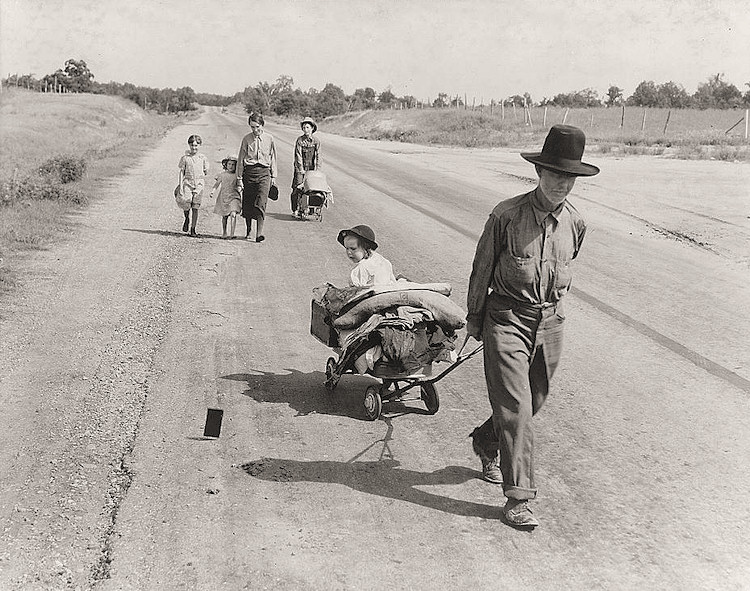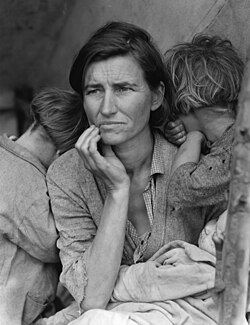
Dorothea Lange Photo Analysis/Vignette
For some great tips on analyzing photographs, check out “Exploring Photographs” from the famous Getty Museum. Using their basic template for analysis, you will analyze some Dorothea Lange photography, which you will find at The History Place.
Step One: Description--Objective and descriptive; make no judgments
What do you see? What is in the photo--objects, scenery, people? Where are they placed? What is happening? What are people doing?
Step Two: Reflection--Subjective and speculative; inference
What are the people in the photograph thinking about? What are they feeling? What emotions are they going through?
Step Three: Formal Analysis
A good place to start formal analysis is to look at a work of art and take note of how your eye moves around the object. Where does your eye go first, and why were you attracted to that part of the image? What colors, textures, and shapes appear in the image? What did the artist include in the composition to guide your eye or to direct your gaze to a certain part of the image? Check out the elements and principles of composition to help you.
Step Four: Vignette
What is a “vignette?” A vignette is a short, well written sketch or descriptive scene. It may reveal character, or mood, or tone. It may have a theme or idea of its own that it wants to convey. It is the description of the scene or character that is important. Think of the two Steinbeck pieces we read-”Breakfast” and “The Turtle.” These pieces do not necessarily have a plot (which would make them stories), but, rather, reveal larger ideas about life during the Depression.
Using the same photo you analyzed, write a “vignette” based on your photo.This is your chance to be very descriptive and creative! Paint the picture with your words.
This vignette should be at least 3 paragraphs. You will be graded using a six-trait rubric—with emphasis on word choice and voice, i.e., how detailed and descriptive you are. Use Steinbeck as an exemplar.



